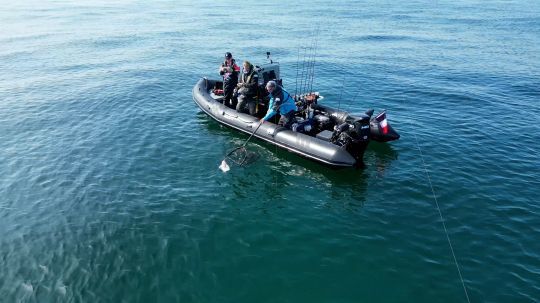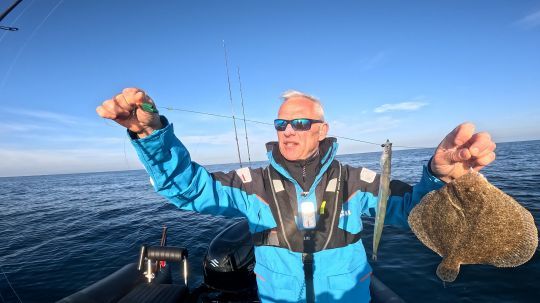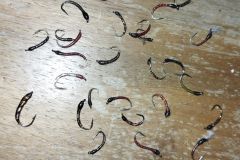Turbot behavior
My change of technique dates back to the day when, in the middle of the descent, on 30 meters of water, a turbot came to attack my Delalande Swat Shad 10 meters below the boat. Impossible that this was a one-off, I guessed that turbot, out of slack water, is capable of hunting in open water and in the current.
Indeed, turbot is a flatfish distinguished by its hunting behaviour. Unlike other flatfish, which are mainly caught anchored, turbot can also be caught drifting. It is capable of pursuing its prey in the current and attacking larger prey. A nice hook and a good bite don't scare them at all!
Fishing techniques
Land-based fishing
Anchor fishing is a common technique for flatfish. Here are 3 tips on how to fish for turbot on a slackwater anchor:
- Use natural baits: sand eels or mackerel strips are my favourite and often the most effective.
- Fish near underwater structures: wrecks, reefs and sea grass beds are ideal places to find turbot. In any case, the edges of these areas are often excellent. Of course, as I've already mentioned, ridges are a must.
- Dare to use soft lures: bounce them on the bottom to attract the turbot's attention. Turbot love short, jerky movements interspersed with long pauses

Drift fishing
Drift fishing is an effective technique for turbot, especially when they are actively hunting. It's really the one I prefer. Here are 3 tips for drift fishing for turbot:
- Use heavy lures: they'll allow you to alternate fishing on the bottom, where you'll be looking to lift a bit of sand, and fishing in the current to make the lure twirl, sometimes with big surprises.
- Fish close to currents: currents carry the food that turbot come to hunt. Position yourself in the current and fish from the bottom to the surface. As I said earlier, the fish can follow you from the bottom and catch much higher up.
- Use a variety of baits: if you decide to fish with baits by dragging them in the boat's wake. Change the type of bait regularly until you find the right one. Turbot can be selective.
A few more tips on equipment
Hooks
Turbot can reach a weight of over 10 kg, so it's important to use sturdy hooks of the right size. In my opinion, sizes 1/0 to 3/0 are ideal for fishing this fish, depending on the bait you use.
Lines
10 kg, flat out in the middle of the current, is a lot of weight! It's important to use strong lines when fishing for turbot:
- Use fluorocarbon leaders: they are tough and not very visible in the water.
- Use 20- to 30-pound braids: that's all you need to avoid missing the fish of a lifetime!

Turbot fishing can therefore be practised all day long, not just at slack water. By integrating turbot behaviour and adapting your fishing techniques accordingly, you can greatly improve your chances of success, especially on big fish. Don't forget to be patient, observe the currents and use a variety of baits and lures to maximize your chances of catch. Above all, enjoy yourself.









